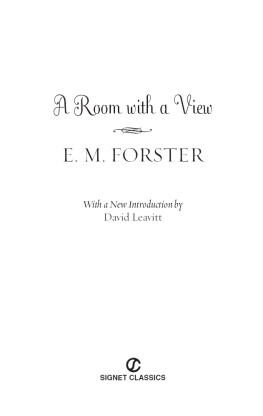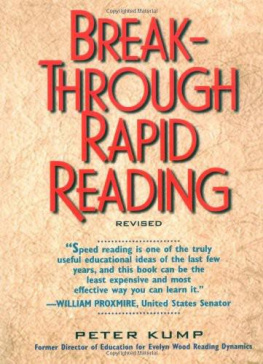FIND OUT JUST HOW FAR YOUVE COME
Although youve come to the conclusion of this course, youre actually just at the end of the beginning. Youve accomplished a tremendous amount if youve done all of the exercises in the book, and youve undoubtedly increased your reading skills a great deal if youve followed the sections with the practice drills. The greatest challenge yet lies ahead of you, maintaining and even improving the gains youve already made.
Now you must begin to plan and practice to set lifetime habits so that youll be certain to keep up your reading rate and continue to get as much reading done as you need to. The techniques are already in your hands, but now you must begin to apply them in slightly different ways. Thats why there is still another section of practice drills to do.
This section of practice drills is necessary for two reasons. First, you probably still need more high-speed practice. These drills will provide that for you. Second, you need drills that are readily applicable to more of your daily reading situations. It is hoped these drills will also meet those needs. So in effect, these are the continuation drills, the drills to continue working with as long as you wish.
DEVISE A SIX-MONTH PLAN
It would be good to set a six-month plan now to ensure that you will establish the habits necessary to cement these new techniques. As has already been suggested, you should decide upon a regular reading time if that is possible. Perhaps a half hour three times a week, maybe more. If this is not feasible, plan to use every spare fifteen minutes and carry reading materials with you.
If you know when you will be reading, you next must plan what to read. So set up a list of books you wish to read. Or if you have more reading than you can keep up with anyway, plan what you. will read, setting priorities as to what is most vital, and begin with the first six items.
Plan to do a few drills during the next six months. Forced reading drills such as the ones in the final section of practice drills are excellent. They will help you to get into the habit of reading a book or a large portion of one in a single sitting. At first this will be a practice reading session, but soon you will find it is really reading.
HOW THOMAS WOLFE BECAME A SPEED READER
When renowned author Thomas Wolfe was growing up, he discovered the pleasures of his local library as well as evolving the frustrating idea that he wanted to read every book in it. He set out to do just that, setting a goal of going through two books a day, regardless of what he got from them. Eventually, he became a very fast reader, using what are very necessary techniques to do so: very fast practice and continually setting goals to get more reading accomplished.
Now that speedreading has become a respectable skill and we know how to teach it so much more efficiently, hopefully this book and your good practicing will enable you to become a super reader with far less effort and frustration.
A FEW TIPS
Remember to always decide what your reading purpose is prior to reading anything. This is a vital habit to establish for becoming an efficient reader. Be ruthless in evaluating what is worth reading. Your valuable time is irreplaceable; dont squander it on material that ultimately wont either bring you pleasure or answer needs for you as a student or a business person. Knowing what not to read is often as important as knowing what to read.
Always use your hand as a pacer. It seems that many look for a way to avoid this. But all research has shown that when you take away the pacing device, the reading rate tends to fall. With this method, if you have done your practicing, research has shown that you will still maintain a solid improvement of a couple of hundred words per minute. I wouldnt try to beat the odds. I dont think its worth it when using the hand is so easy.
Though you may not always want to use your hand, try to use it for some reading every day in order to maintain your skills. Thats all it takes. If youre in public you may try using a pencil to be less obvious. But I encourage you to show off your skills. Others will tend to be envious and it will reinforce your good habits.
Also, if you stop using your hand, do not think that all is lost. Many of the techniques in this book, once learned, are never lost. A study showed that of graduates who stopped using their hands, as soon as they started to use them again their rates went back upnot as far up as they did for those who used their hands continually, but enough to be encouraging. In other words, once you have the skills, you may get rusty but youll never lose them.
And dont forget that whenever you wish to remember something, do a written recall after the reading. This is so easy and effective. There are many courses we take which we remember nothing about within a few short years. If you remember only to use your hand when you want to read fast, and to recall when you wish to remember, I think youll find your time and energies well spent.
Now do your final testing and you will be ready to begin your new practice drills.
Ending Reading Evaluation
Materials:A pencil or pen
A timing device
Your testing book. The same one you used in Chapter Two, but select a different section which you havent read.
1. Select a section of your testing book that is about 40 pages long and that you have not read.
2. Read as far as you can in the material for three minutes. Use your timing device.
3. At the end of the three minutes, make a mark where you stopped reading, then close the book.
4. On a piece of paper, write everything you can remember from the reading without looking back at the reading selection. Number the items as you write.
You may take up to six minutes; use your timing device.
5. Compute your reading rate and record it on your progress profile.
Practice Drills for Continuing
Now that you have completed this book, you have arrived at a new beginning: you must make a conscientious effort to maintain the gains youve made and to progress further if you wish to. The next few months are crucial in establishing good reading habits and in making your new skills comfortable. The only way this can be done is through regular use.
If possible, continue practicing at least twenty minutes a day for the next six weeks, gradually changing over to a Lifetime Reading Plan. As your habits develop, you can taper off practicing, but any time you feel your rate beginning to slip, simply do a drill and bring it back up again.
The drills which follow are ones which we would use in the final week of a classroom course. They will be useful to you to use either for a final week of hard practice, or to do twenty minutes a day for the next six weeks. Of course you may go back and use any other drills in the book which you found particularly useful.
Materials You Will Need for These Drills
1. A timing device.
2. Pen or pencil.
3. Paper or the word processing program on your PC.
4. Assorted books, nonfiction, biographies, and fiction.
5. Your daily newspaper.
DRILL NO. 22
Materials: Assorted books Pencil and paper Timing device
Estimated Time: 15 minutes
Purpose: To develop reading rate
Objective: Obtain minimal comprehension at maximum rates
THIS DRILL MAY BE REPEATED
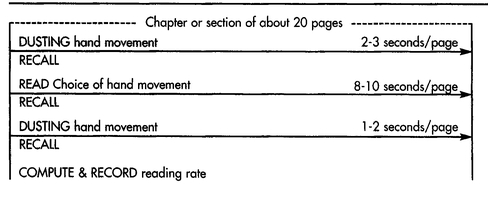

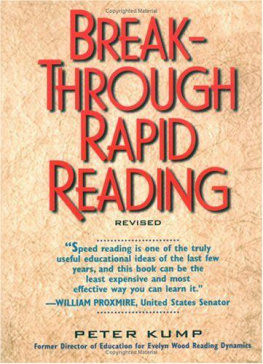


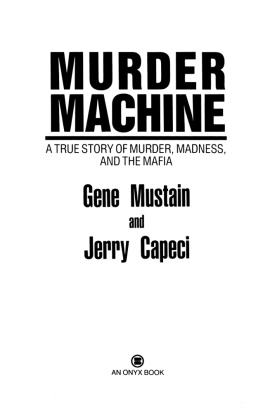
![Harry Turtledove - Worlds that werent : [novellas of alternate history]](/uploads/posts/book/79050/thumbs/harry-turtledove-worlds-that-weren-t-novellas.jpg)

